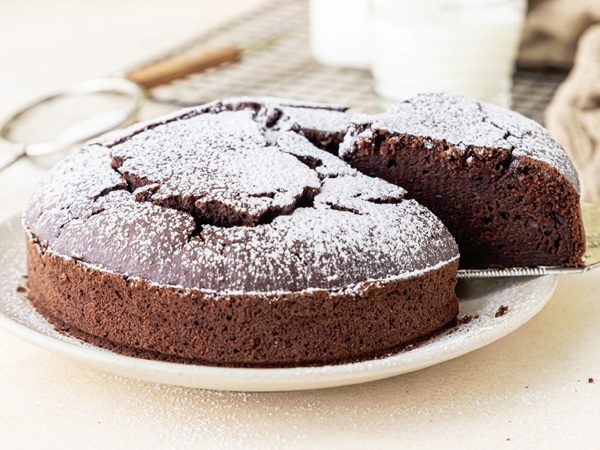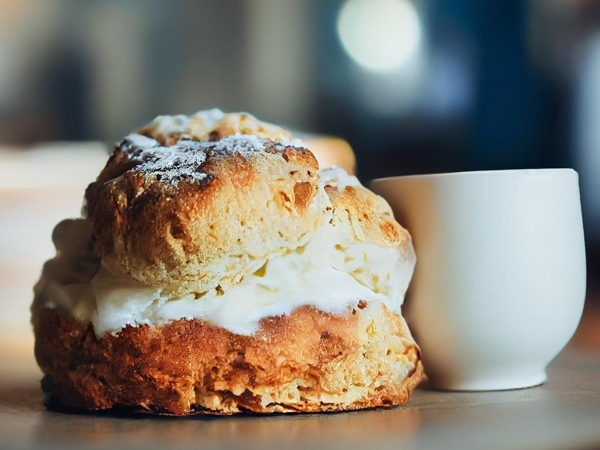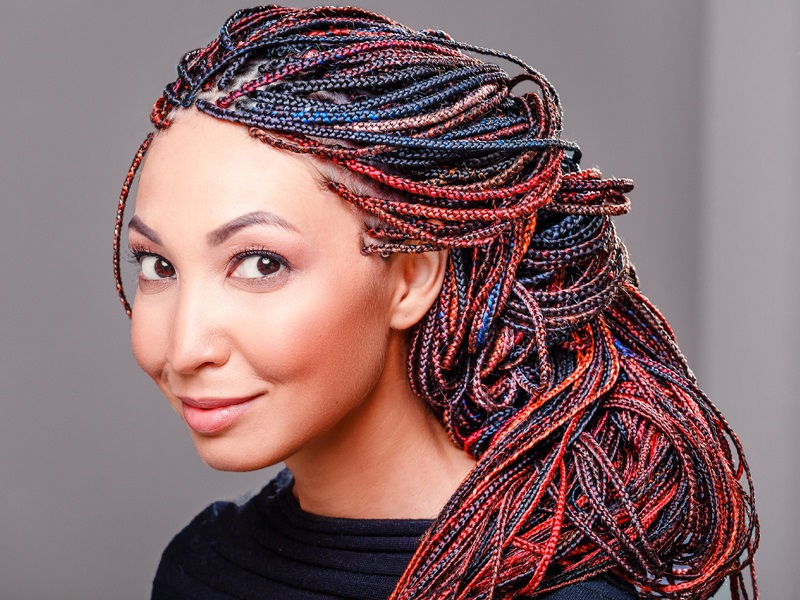Be it birthday or anniversary. No celebration is complete without the ceremonial cake cutting! Cakes are indispensable to any happy occasion and symbolize love, sharing, generosity, milestone etc. Before modern decorative cakes came into existence, cakes were as simple as a loaf of bread with a drizzle of honey. Today, there are so many different types of cakes available in the market which combine good taste with aesthetics!
So, if you love cakes as much we do, then read along to know the history of cakes, categories, types and some cool facts about them!
What is a Cake?
A Cake is a sweet baked food made from flour, oil, eggs, sugar and flavouring agents. A batter made with these ingredients is put in the oven to turn into a fluffy, baked bread-like food. The surface is either plain or decorated with frostings, icings, fruits, fondant and other elements. The inside of the cake comes with fillings like a fruit compote, caramel, ganache, whipped cream etc., for a rich taste.
History of Cakes:
The history of cakes is beyond fascinating! The word “Cake” comes from the Old Norse word “Kaka”, which means a small cake or a cookie. The Greeks and Romans had their own version of cakes made with eggs, milk, honey and nuts. In mid-17th century Europe, the cake got a real ‘facelift’ that closely resembles the cakes we eat now.
The people then had advanced skills, technology and equipment to create finer versions of cakes. Using molds, they were able to create round-shaped cakes with a covering of boiled sugar frosting. By 20th Century, many new types of cakes like layered cakes got into the picture. A variety of frostings like American Butter Cream became the mainstream choices in the cake business.
Today, the sky is the limit for modern bakers! Cakes are fast turning into edible pieces of art and come in myriad versions like gluten-free, keto, sugar-free, eggless etc., to suit everyone.
What are the Classification of Cakes with Examples:
Cakes are classified into three main categories – Shortened, Unshortened and Chiffon. Let us now understand the differences between each:
-
Shortened Cakes:
These are conventional or standard birthday or wedding cakes that are quite moist and fluffy due to the addition of fats like butter or oil. Almost all shortened cakes go through the creaming method, which involves blending fats with sugar for a better rise.
Examples: Buttercream Cakes, Instant Cake Mixes, Pound Cakes
-
Unshortened Cakes:
These types of cakes contain higher amounts of foamed eggs or egg whites than fats like butter or oil. They are also called Foam cakes or Sponges. The egg is a key ingredient in these cakes whose proteins create the structure. The textures can range from spongy, dense to dry and crisp, depending on the variant.
Examples: Sponge Cake, Angel Food cake
-
Chiffon Cakes:
Chiffon cakes fall in between shortened and unshortened cakes. They contain both oils and eggs to create a moist and fluffy cake. The crucial part of a chiffon cake lies in beating the whites to stiff peaks and folding them into the cake batter instead of adding them whole. Butter is not an element in chiffon cakes, and hence the rich, buttery flavour goes missing in them!
Examples: Chocolate Chiffon Cake, Orange Chiffon Cake etc.
How Many Different Types of Cakes to Bake in India:
Let us now explore the 15 most popular varieties of cakes names with pictures:
1. Pound Cake:
A pound cake is a traditional cake variety made from just four ingredients – flour, eggs, butter and sugar. Pound cakes can be either square or round, depending on whether a loaf pan or bundt mold is used for baking. These cakes are free from frosting or decoration, but some bakers prefer dusting it with powdered sugar or garnishing them with nuts. There are many variants of pound cakes from different countries like “Quatre-Quarts” (French), “Panque”(Mexican) etc. They vary from each other in terms of ingredients and cooking techniques.
2. Red Velvet Cake:
Red Velvet cake is a rich, moist and decadent type of cake that has a scarlet-red color. The ingredients in this cake are flour, eggs, buttermilk, cocoa, vinegar and natural or artificial food coloring. The cakes get the name Red Velvet from the reddish color and the velvety texture. The cake tastes more like a chocolate cake, but the cream cheese frosting makes the differentiating factor. Most packaged red velvet cakes contain high amounts of artificial dyes, which can pose health hazards.
3. Layer Cake:
Layer Cake or Sandwich Cake contains multiple layers of cake glued together with frosting or filling. A sponge or a butter cake gets sliced into multiple layers and re-assembled by adding fruit compotes or jams. The more the layers of cake, the bigger the slice gets. Layer cakes are the most sought-after cakes for birthdays, weddings and other special occasions. The most popular variant of layer cakes is the Rainbow cake which features different colors in each layer of the base cake.
4. Upside Down Cake:
This type of cake is rightly called the “Upside Down” cake because the toppings are on the bottom and the sponge on top. The cake is usually baked in a single pan by pouring batter over caramelised fruits like pineapple, apple etc. Flipping the cake reveals the beautifully cooked fruits sitting prettily on top of the perfectly baked cake. Some popular versions of this cake are the French Tarte Tatin (apple tart cake), Portugese Bolo de ananas.
5. Cheesecake:
Cheesecake is a delicious type of cake which uses soft cheese like Ricotta as its main ingredient. Cheese gets combined with eggs and sugar to form the main element of the cake. The crust base or the bottom layer can be crushed graham crackers, biscuits or even a thin sponge. Cheesecakes come in two varieties – baked and unbaked. Fruits like blueberries, strawberries etc., work really well with the tartness of these cheese. Some popular variants of cheesecakes include the Basque cheesecake, Australian Cheesecake, Swisscheesecake etc.
6. Genoise Cake:
Genoise cake is a type of Italian sponge cake with origins in Genoa, Italy (Hence the name!) The preparation process involves using the whole egg instead of seperating the yolk and whites. The eggs are whisked with sugar, flour and melted butter before spreading the batter on a baking sheet. Once done, the cake gets a golden yellow surface and a soft elastic texture. Just like a sponge cake, Genoise cake can be layered and filled with frostings and creams to make it more moist.
7. Flourless Cake:
As the name suggests, flourless cakes are free from maida or all-purpose flour. The cake uses ingredients like chocolate, butter, eggs, sugar, salt, vanilla extract etc., to get the structure. The cake turns “gluten-free” by eliminating flour, making it ideal for people with gluten allergies or those on special diets. The process involves microwaving chocolate and butter and then adding the rest of the ingredients. The batter gets the strength from the starch in chocolate and turns it into a fluffy cake once baked. Frostings like ganache, whipped cream, or powdered sugar elevate the cake’s taste to a whole new level.
8. Carrot Cake:
Carrot cake is a type of shortened cake that uses grated carrots as its main ingredient. The origins of this cake trace back to the 16th century when carrots were cheaper substitutes to sugar. Apart from staple ingredients like oil, eggs, flour, sugar etc., a generous amount of ground spices are added to the cake. Carrot cakes can come as loaves, sheet cakes, layer cakes with cream cheese filling, or cupcakes.
9. Chocolate Cake:
Chocolate cake is easily one of the most popular types of cakes in the world. It’s hard to resist a perfectly baked chocolate cake irrespective of our age group. Chocolate cake, also called the Chocolate Gateau, is a flavoured chocolate sponge with luxurious fillings of chocolate ganache. There are many variants of this cake that use different fillings like berry compotes, chocolate custard, nuts etc. Some of them are Black forest cake, Chocolate Fudge Cake, Molten Chocolate Cake, Devil’s Food Cake etc.
10. Rock Cake:
Rock cakes, Scones or rock buns are small cakes that resemble rocks. They look more like cookies with a rough surface and use a hard dough to form the pastry. The main ingredients of these cakes are flour, butter, spices, sugar, eggs, milk, dry fruits like raisins, candied oranges etc. Leavenings agents like baking powder are not a part of the recipe. Popular variants of rock cakes are British Rock Cake and Jamaican Rock Cake.
11. Cinnamon Tea Cake:
Cinnamon tea cake is a light, mildly spicy type of cake which goes very well with a cup of tea. The cake uses flour, sugar, baking powder, ground cinnamon powder and dry fruits. The surface texture is smooth, dry and dark brown in color. The inside of the cake is quite moist and light brown. Depending on the country, these cakes are baked in different shapes like loaves, large cookies or a round sponge. Usually, tea cakes are mildly toasted with some butter before enjoying them to release the best flavor.
12. Dump Cake:
The cake gets this quirky name for all the ingredients are “dumped” into a baking pan. Dump cake is probably one of the most easiest types of cakes made with dry cake mix, fresh or frozen fruits, nuts and melted butter. In a way, dump cake is more of a fruit-based dessert than a standard cake. This beginner-friendly cake comes in many variations like Pumpkin spice dump cake, Banana upside down dump cake etc.
13. Humming Bird Cake:
The Humming Bird Cake is a Jamaican recipe that contains ripe banana and pineapple as its key ingredients. Other ingredients include flour, eggs, vegetable oil, sugar, salt, vanilla extract, cinnamon powder, vanilla extract, leavening agent etc. The cake gets its name from the scissor-tailed Hummingbird, the national bird of Jamaica. Historians say that the idea behind the invention of this recipe is to attract American tourists to the Jamaican islands. There is no doubt that this idea worked for The Humming Bird Cake was the most requested recipe in the Southern Living Magazine of the USA.
14. Plum Cake:
Plum Cake is one of the most popular types of cakes globally, with each country or region having its unique version. There are so many varieties of the plum cake made with either dry fruits, fresh fruits or sometimes both. Fruitcake and the classic Christmas cake are two famous variants of plum cake. The cake gets the name “Plum Cake” from the use of dried plums or prunes in the original version. Apart from staple ingredients like flour, eggs, sugar and leavening agent, some versions of this cake include rum or rum-soaked dry fruits and spices to enhance the taste.
15. Opera Cake:
The Opera Cake is an iconic French cake which uses coffee and chocolate as its main ingredients. This layered cake comprises an almond sponge soaked in coffee syrup to bring richness. The fillings include layers of chocolate ganache, coffee, French Buttercream, all covered with a shiny chocolate glaze. Though the origins of this cake are not clear, it is known that a French Pasty Chef called Cyriaque Gavillon came up with this recipe in 1955. Because the cake reminded his wife of the famous Paris Opera House, it was named the “Opera Cake”!
Interesting Facts About Cakes:
Here are some surprising facts about the world of cakes:
- The name “Royal Icing” comes from Queen Victoria’s wedding cake which had pure white icing on it.
- The tradition of birthday cakes began in the 15th century when one-layered birthday cakes were given as presents.
- Scotland is known as the “Land of Cakes” because the country produces some of the world’s best cakes, including the famous oatmeal cakes.
- The first cupcake came into existence in 1796 when an American baker called Amelia Simmons came up with a recipe to bake cakes in cups.
- Cupcakes were also called the Number Cakes or 1234 cakes due to the ratio of ingredients used – 1 cup butter, 2 cups sugar, 3 cups flours, 4 eggs, 1 cup milk and 1 spoon soda.
- According to an ancient English belief, putting fruit cakes under the pillows can invite sweet dreams about the person you will marry.
- The wedding cake of Princess Diana and Prince Charles cost a whopping $40,000, making it was one of the most expensive cakes during that time.
Did this discussion on the different types of cakes give you some cake cravings? We are on the way to bake a decadent chocolate cake and can’t wait to sink our teeth into some chocolatey goodness. What is your favorite cake variety and why? Do let us know!
The information published in this article is purely for informational and educational purposes only and does not constitute legal or other professional advice on the subject.











































